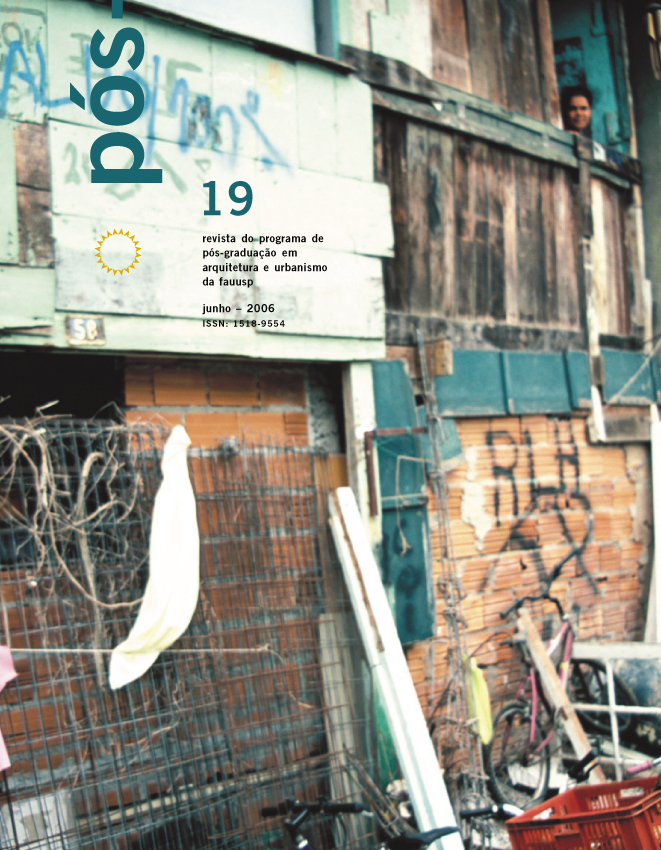The perennial nature of" Manual de Vogal sem Mestre" for Lourenço Marques' outskirts (Caniço), by Pancho Guedes
DOI:
https://doi.org/10.11606/issn.2317-2762.v0i19p144-157Palavras-chave:
Manifesto, periferia, doença, terapêutica, brigadas, auto-resoluçãoResumo
Amâncio Miranda Guedes é seguramente um dos arquitectos mais premiados por sua obra em África particularmente em Moçambique. De formação anglo-saxónica, com espírito irreverente como testemunha sua arquitectura, teve fortes ligações ao Team Ten em 1960, sendo um dos arquitectos com obras e projectos publicados na Europa, nos Estados Unidos e na África do Sul, onde foi professor. Participou em vários eventos no mundo da arquitectura destacando-se na Bienal de São Paulo em 1961, tendo ficado conhecidas obras como, O leão que ri e a Casa avião. No entanto é quase desconhecida sua visão da cidade, da então Lourenço Marques, tendo sido critico desconcertante do quadro urbanístico vigente, de matriz colonial, que ignorava a ocupação peri-urbana espontânea, denominada de Caniço, que corresponde hoje a cerca de 2/3 da cidade de Maputo. Este" manifesto" de 1963, para além de visualizar ironicamente o futuro crescimento da cidade é um texto instaurador comportando uma certa intemporalidade, constituindo potencialmente um referencial temporal, para cidades que apresentam ocupações com características semelhantes que poderemos referir o Muceque de Luanda ou mesmo as favelas do Rio de Janeiro.Downloads
Os dados de download ainda não estão disponíveis.
Downloads
Publicado
2006-06-01
Edição
Seção
Artigos
Licença
O detentor dos direitos autorais é o autor do artigo. A revista exige apenas o ineditismo na publicação do artigo. O autor tem do direito de divulgar seu artigo conforme sua conveniência devendo citar a revista.
DIADORIM - Diretório de Políticas Editoriais
Como Citar
Morais, J. S. (2006). The perennial nature of" Manual de Vogal sem Mestre" for Lourenço Marques’ outskirts (Caniço), by Pancho Guedes. PosFAUUSP, 19, 144-157. https://doi.org/10.11606/issn.2317-2762.v0i19p144-157












